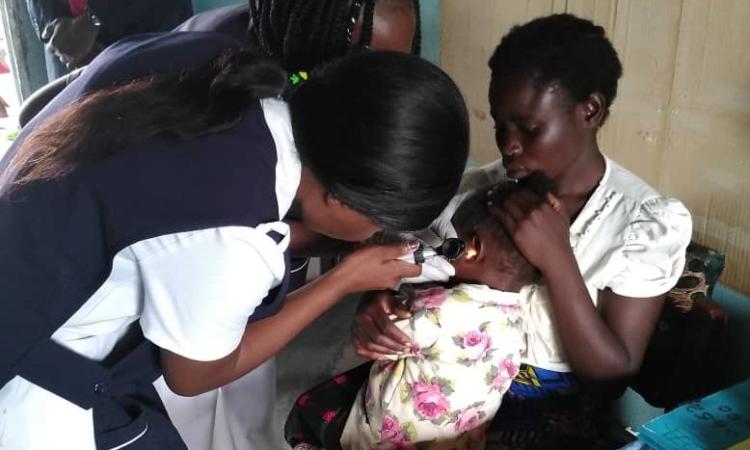
Over 5% of the world’s population – or 430 million people – require rehabilitation to address their disabling hearing loss (432 million adults and 34 million children). It is estimated that by 2050 over 700 million people – or 1 in every 10 people – will have disabling hearing loss.
‘Disabling’ hearing loss refers to hearing loss greater than 35 decibels (dB) in the better hearing ear. Nearly 80% of people with disabling hearing loss live in low- and middle-income countries. The prevalence of hearing loss increases with age, among those older than 60 years, over 25% are affected by disabling hearing loss.
A person who is not able to hear as well as someone with normal hearing – hearing thresholds of 20 dB or better in both ears – is said to have hearing loss. Hearing loss may be mild, moderate, severe, or profound. It can affect one ear or both ears and leads to difficulty in hearing conversational speech or loud sounds.
‘Hard of hearing’ refers to people with hearing loss ranging from mild to severe. People who are hard of hearing usually communicate through spoken language and can benefit from hearing aids, cochlear implants, and other assistive devices as well as captioning.
‘Deaf’ people mostly have profound hearing loss, which implies very little or no hearing. They often use sign language for communication.
Although these factors can be encountered at different periods across the life span, individuals are most susceptible to their effects during critical periods in life.
When unaddressed, hearing loss impacts many aspects of life at individual level:
WHO estimates that unaddressed hearing loss poses an annual global cost of US$ 980 billion. This includes health sector costs (excluding the cost of hearing devices), costs of educational support, loss of productivity, and societal costs. Of these costs, 57% are attributed to low- and middle-income countries.
Many of the causes that lead to hearing loss can be avoided through public health strategies and clinical interventions implemented across the life course.
Prevention of hearing loss is essential throughout the life course, from prenatal and perinatal periods to older age. In children, nearly 60% of hearing loss is due to avoidable causes that can be prevented through implementation of public health measures. Likewise, most common causes of hearing loss in adults, such as exposure to loud sounds and ototoxic medicines, are preventable.
Effective strategies for reducing hearing loss at different stages of the life course include:
Early identification of hearing loss and ear diseases is key to effective management.
This requires systematic screening for detection of hearing loss and related ear diseases in those who are most at risk. This includes:
Hearing assessment and ear examination can be conducted in clinical and community settings. Tools such as the WHO “hearWHO” app and other technology-based solutions make it possible to screen for ear diseases and hearing loss with limited training and resources.
Once hearing loss is identified, it is essential that it is addressed as early as possible and in an appropriate manner, to mitigate any adverse impact.
Measures available to rehabilitate people with hearing loss include:
The use of hearing assistive technology, and services such as frequency modulation and loop systems, alerting devices, telecommunication devices, captioning services and sign language interpretation, can further improve access to communication and education for people with hearing loss.
WHO’s work on ear and hearing care is to promote integrated people-centred ear and hearing care (IPC-EHHC).
WHO’s work is guided by the recommendations of the WHO World report on hearing (2021) and the World Health Assembly resolution on prevention of deafness and hearing loss.
WHO’s work includes:
Related
News
Fact sheets







